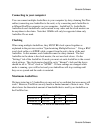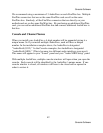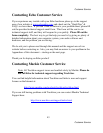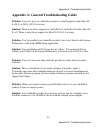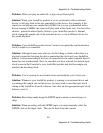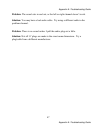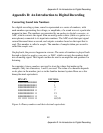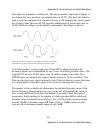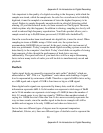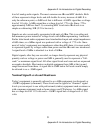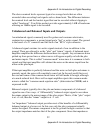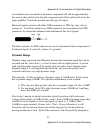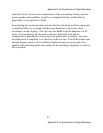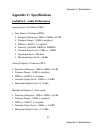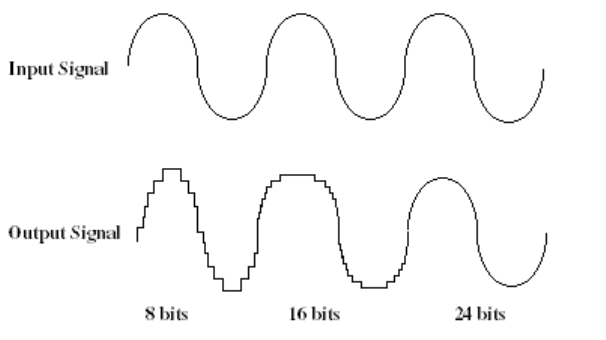
Appendix B: An Introduction to Digital Recording
49
Appendix B: An Introduction to Digital Recording
Each digit in the number is called a bit. The binary numbers expressed in Figure A
are sixteen bits long, and have a maximum value of 65,535. The more bits that are
used to store the sampled value, the more closely it will represent the source signal.
In a 16-bit system, there are 65,535 possible combinations of zeroes and ones; so
65,535 different voltages can be digitally represented. (See Figure A above).
Figure B. The more bits there are available, the more accurate the
representation of the signal and the greater the dynamic range.
Your Echo product’s analog inputs use 24-bit ADCs, which means that the
incoming signal can be represented by any of over 16 million possible values. The
output DACs are also 24-bit; again, over 16 million values are possible. The
S/PDIF inputs and outputs also support signals with up to 24-bit resolution. Your
Echo product processes signals internally with 24-bit resolution to insure that there
is no degradation to the audio signal as it is processed through the system.
The number of bits available also determines the potential dynamic range of the
device. Moving a binary number one space to the left will multiply the value by
two, so each additional bit doubles the number of possible values that may be
represented. Each doubling of the number of values provides 6dB of additional
dynamic range (see decibel section below). So, a 24-bit system can theoretically
provide 144dB of dynamic range (6dB times 24 bits = 144dB) versus a 16-bit
system with a maximum dynamic range of only 96dB.



